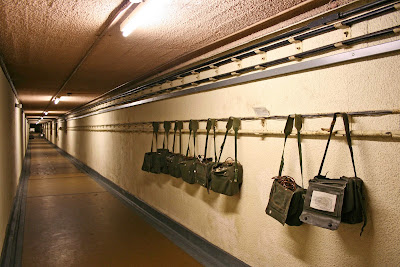While I was in England I read Simon
Armitage’s book Walking Home subtitled “Travels with A Troubadour on the Pennine
Way.” It’s a terrific account of
walking the 250 plus miles of the Pennine Way in the “wrong” direction, north
to south, the trip made a good deal more arduous (in my estimation) because
each night our author gives a poetry reading.
Blimey. I’d have been on my hands and knees by the end of that.
I do maybe half a dozen readings a
year (not poetry admittedly), and although I enjoy them well enough, I do find
them surprisingly knackering. The
idea of doing one more or less every night for three weeks after a hard day’s
walk, sounds like it would become absolute torture. Or maybe it works another way. Maybe you’d just go into a fugue state: walking, reading,
sleeping; walking reading, sleeping, for as long as it takes. Although to be fair, Armitage keeps his
wits about him throughout the book. Not so much in this picture, perhaps:
There were two things that really
surprised me (in a good way) in Walking Home. One, that Simon Armitage used to have ambitions to be a
cartographer. How often do you
hear somebody say that? Although
in his case he did have the benefit of a geography degree. I too, in idle moments, have thought it
might be very cool to be cartographer, although without ever really knowing
what that entails, and certainly without having a geography degree.
The second surprising thing is his
description of getting lost while walking. He writes, “I have noticed a very alarming and rapid change
in my psychology, as if the claustrophobia and disorientation brings about a
particular condition, the symptoms of which include fear, panic, and loss of logical
thought, but also less expected and harder-to-define sensations akin to
melancholy, including something like hopelessness but also close to grief.”
What interests me about this
description is the extent to which I recognize all these symptoms except the
very last one. The fear, panic, and loss of logical thought are, I assume, what
everybody feels when they’re lost, and that naturally enough leads to
hopelessness. But I pretty much
thought I was the only one who experienced melancholy, that sense of “I’m lost and alone
in the world, and
what else could you expect, and why does it even matter?” But I’ve never made that final leap to
grief. Perhaps I haven’t been
sufficiently lost.
I did, however, get thoroughly lost
last month while I was in London, not in any life-threatening way, but because
London is a place that I flatter myself I know pretty well, and because I even
had a map, it was unusually humiliating. I’ve written elsewhere about being
lost (mercifully, briefly) in the Australian desert, and that was certainly
scary, but being lost in a place you think you know is actually even more
disorienting.
My plan in London was to do a short
walk to see two ruined city churches, St. Dunstan-in-the-East (above) and Christ Church
Greyfriars (below) – both more or less destroyed by German bombs in the Blitz, but the
ruins preserved as deconsecrated war memorials. The route from one to the other
inevitably takes you past St Paul’s Cathedral which miraculously survived the
Blitz, though it does have shrapnel scars.
I decided to start at St Dunstan’s,
and Monument looked like the nearest tube, so off and I went, came up out of the
station – which had the exits marked with street names - and I stepped into the
city and I had absolutely no idea where I was. I couldn’t tell which street was which, which was north or
south, east or west, and I set off along Gracechurch Street, and found myself
approaching London Bridge which I knew was wrong. I stopped, turned back, walked for a bit, and felt more lost
than ever.
I decided there’d be no shame in
consulting the map, which I thought I’d have no need of, but I got it out, and
you know as a sometime wannabe cartographer, I reckon I’m pretty good with a
map, but this time I couldn’t make any sense of it whatsoever. I’d look at, think I’d worked it out,
start walking in one direction, and a couple of minutes later realize I was
obviously heading in the wrong direction again. This happened time after time. It became frustrating; it became absurd, though it never
quite became comical.
It was infuriating but also, per
Armitage, a deeply melancholy experience.
I was lost in some deeper, non-geographical sense. It wasn’t simply that
I didn’t know where I was, where I was going, or how I was going to get there to
get, but rather that, after a while, I no longer understood why I wanted to go
there at all, and in some odd way I felt like I didn’t even know exactly who I
was. Was I losing my mind? Was the Alzheimer’s kicking in? It really didn’t seem to matter.
Well inevitably I got over it
before very long, found my way, found the churches, had a good (modest)
walk. And I know you could make
too much of this, but there was something salutary in the experience of being
lost. As a psychological,
existential, maybe even cosmic dilemma, it's actually far more interesting than
knowing exactly where you are all the time. But to appreciate it, it does have to come to an end. Being lost only makes sense if, in the
end, you find yourself again.































